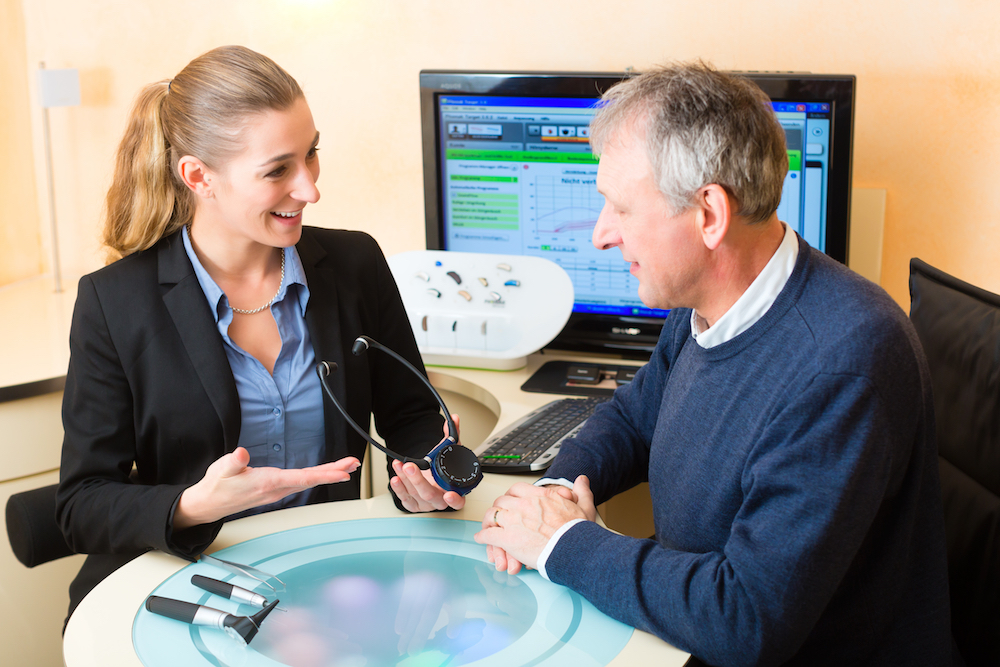What are invisible-in-canal (IIC) hearing aids?
If you’ve been told by your audiologist that you may need a hearing aid,

By: admin | July 23, 2020
There are many different causes of hearing loss which means there are also many solutions available to help you hear better. The most effective treatment for hearing loss is a hearing aid. When you start your journey toward better hearing health, it is helpful to understand what to expect. To determine which hearing aid is right for you and that process starts with a hearing test. Conducted by an audiologist, a hearing test provides a comprehensive evaluation of your hearing loss to find the most suitable hearing aid for you.
A hearing test usually takes around an hour and is nothing to worry about. Audiologists are highly experienced in making your evaluation comfortable and stress-free. Your audiologist will conduct a series of tests during your appointment that are designed to assess how different parts of your ear function. The two tests you are most likely to have are an audiometry test and immittance testing. The audiometry test is the most common. You will either be given headphones to wear or sit in a booth before you are presented with a series of different sounds. The pitch and intensity of the sounds will vary. To indicate you have heard a sound, you will raise a hand. The purpose of the immittance test is to assess the function of the eardrum and the middle ear. This is done by placing a small probe in the ear canal before a slight pressure is applied. This test determines how well the eardrum vibrates and the amount of air behind it. Neither test is especially uncomfortable and your audiologist will ensure you feel calm throughout.
If your hearing test shows signs of a decline, your audiologist will suggest a hearing aid specific to your needs. You will attend a separate appointment to have your hearing aid fitted where you will also be shown the correct way to insert and remove your hearing aids and how to care for them.
There are various styles of hearing aid to consider and your audiologist will work with you to suggest which is best for you.
BTE devices are the style of hearing aid that most of us are familiar with. BTE devices hook over the top of your ear and sit behind it. Sound is then transmitted via a small tube into a custom earpiece that fits into your ear canal. One of the main benefits of BTE devices is the longer battery life – this is because BTE hearing aids are larger than other devices and so too are the batteries. This makes them the perfect solution for those with severe hearing loss.
The RITE hearing aid is a variation of BTE. In this case, the main part of the device is hidden behind your ear and is smaller than standard BTE devices.
These are much smaller than BTE devices which also means they use a smaller battery so you will need to change it more often. ITEs are best-suited to people with mild to moderate hearing loss. Due to the reduced battery life, they are not often recommended if you have more significant hearing loss.
These are the most discreet style of hearing aid and are almost impossible to notice when you are wearing them. Again, their discrete nature means they require a smaller battery so ITCs suit those with mild to moderate hearing loss. Their almost-invisible appearance makes them a popular choice for young people. The downside is they can be tricky to clean so prepare to be diligent in taking care of them.
Once the degree of your hearing loss has been determined and you have been fitted for a hearing aid, your audiologist will advise you on care and maintenance. Hearing health is a continuous journey and changes in your degree of hearing may occur over time and your devices will need to be adjusted accordingly. Exactly as you would with an eye test, it is important to keep regular check-ups with your audiologist and attend any follow-up appointments they advise. For more advice on what to expect from a hearing test, contact The Hearing and Tinnitus Center via the online contact form or call us at 303-534-0163.

If you’ve been told by your audiologist that you may need a hearing aid,
By: admin | September 21, 2020
